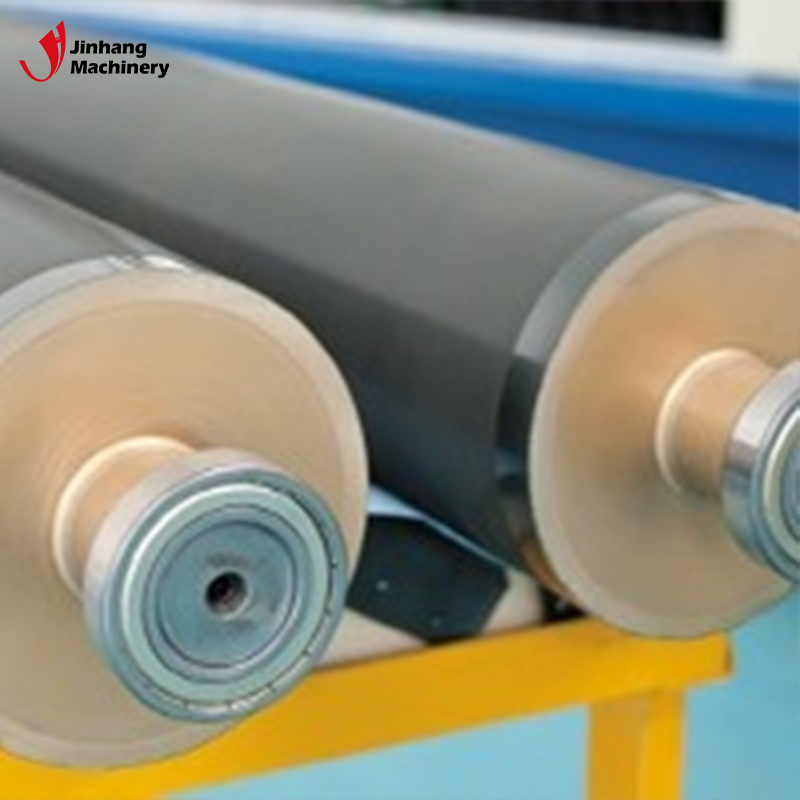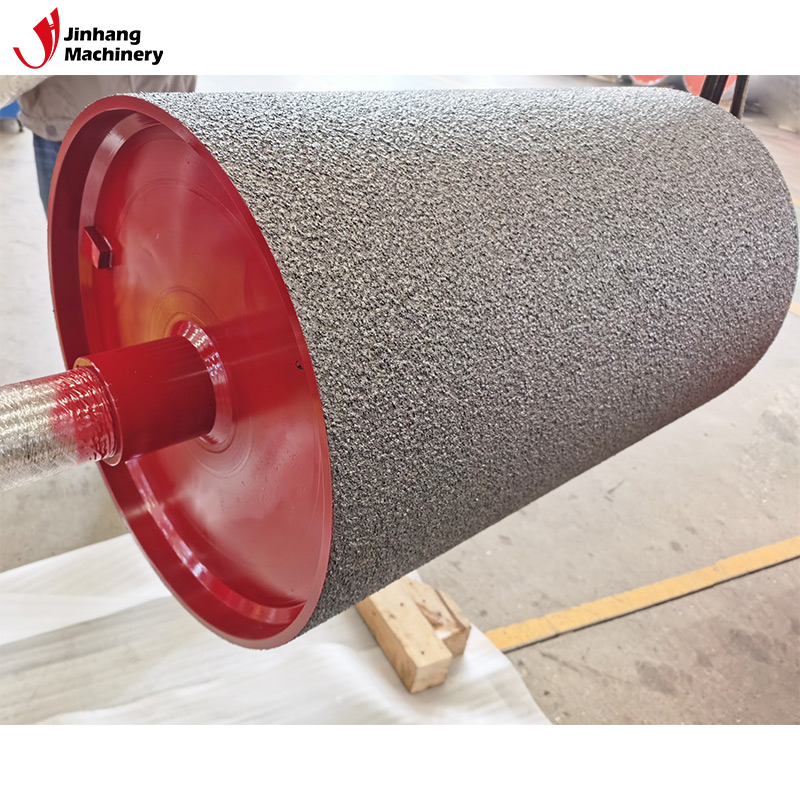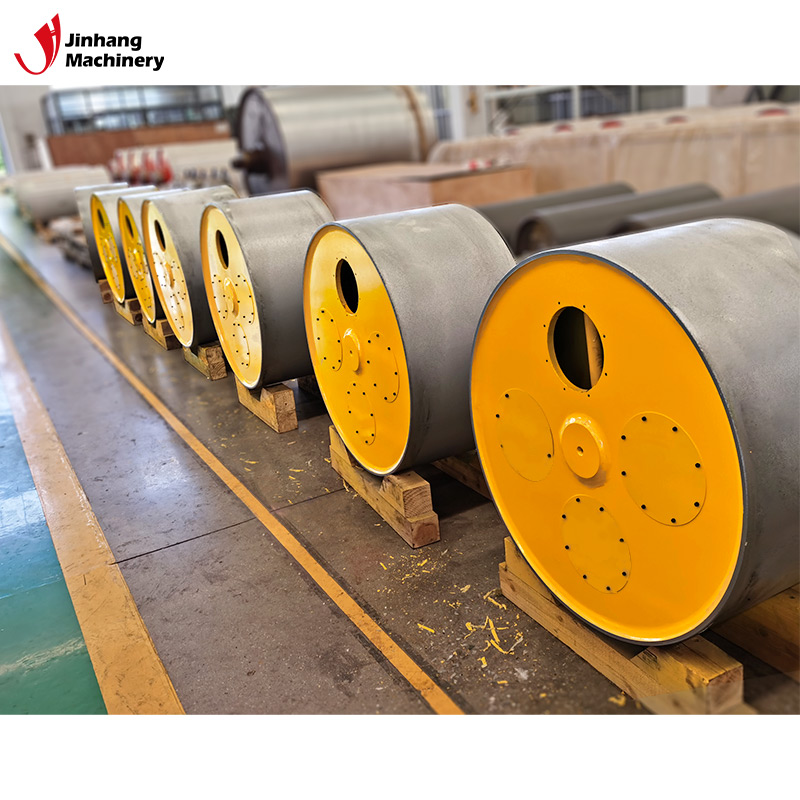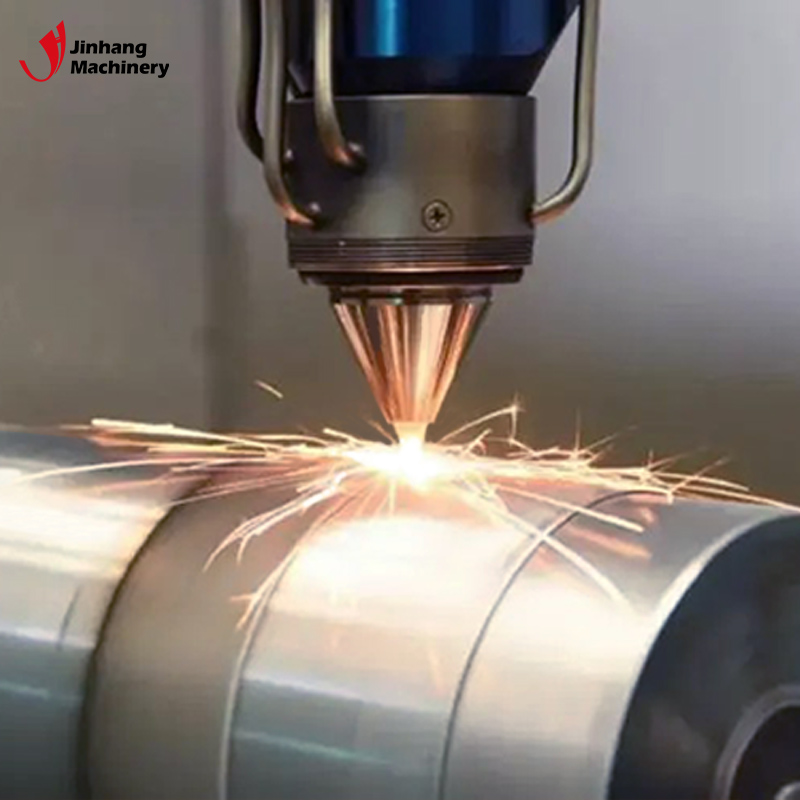What is a Ceramic Anilox Roller? What does it do?
In the printing and coating industry, the Ceramic Anilox Roller is one of the most important equipment. It plays a core role in controlling the transfer of ink and coating liquid, and its performance directly affects the quality of printed and coated products. So, what exactly is a Ceramic Anilox Roller? What does it specifically do? This article will explore this issue in depth.

What is a Ceramic Anilox Roller?
A Ceramic Anilox Roller is a roller used to control the amount of ink and coating liquid transferred, and its surface is covered with a layer of high-hardness ceramic material. This roller surface is engraved with tiny grooves or grids (i.e., mesh) for storing and releasing ink or coating liquid. Ceramic Anilox Rollers are widely used in many industries such as flexographic printing, gravure printing, and coating to ensure the quality and consistency of printing and coating by precisely controlling the amount of liquid.
Construction of Ceramic Anilox Rollers
Ceramic anilox rollers usually consist of two parts: a metal substrate and a ceramic coating. The metal substrate is usually made of steel or aluminum, providing structural support and durability. The substrate surface is coated with a dense ceramic coating through a special process. This coating not only has high hardness, but also has excellent properties such as wear resistance and corrosion resistance. The ceramic coating is engraved with a precise mesh structure. The size, shape and depth of these meshes determine the liquid storage capacity of the ceramic anilox roller.
What is the main function of the ceramic anilox roller?
Precisely control the transfer of ink and coating liquid
The main function of the ceramic anilox roller is to precisely control the transfer amount of ink and coating liquid. During the printing and coating process, the ink or coating liquid needs to be evenly transferred to the surface of the printing plate or substrate through the anilox roller. The tiny grid on the anilox roller determines the amount of liquid that can be stored and released according to its shape, depth and mesh number. By adjusting these parameters, the thickness of the ink and coating liquid can be precisely controlled to ensure the quality consistency of the printed or coated products.
Improve the quality of printing and coating
Ceramic anilox rollers can greatly improve the quality of printing and coating. Due to the hardness and wear resistance of the ceramic coating, the anilox roller can maintain stable performance for a long time under high pressure and high speed conditions and is not easy to wear. This stability enables the anilox roller to maintain uniform ink and coating liquid transfer for a long time, avoiding fluctuations in printing quality due to roller wear. In addition, the chemical corrosion resistance of the ceramic anilox roller also enables it to maintain the integrity of its surface anilox for a long time when it comes into contact with various inks and chemicals, thereby further ensuring the stability of printing and coating.
Extending the service life of equipment
Another important role of ceramic anilox rollers is to extend the service life of equipment. Compared with traditional metal anilox rollers, ceramic anilox rollers have higher hardness and stronger wear resistance, and can maintain their performance for a long time in harsh working environments. This means that the maintenance frequency of the equipment is greatly reduced, and the service life is extended, thereby reducing production downtime and maintenance costs. This feature of ceramic anilox rollers is particularly important for high-volume and high-efficiency production lines.
Saving production costs
Ceramic anilox rollers also have the effect of saving production costs. First, because they can accurately control the amount of ink and coating liquid used, they can effectively reduce material waste. Secondly, the durability and long life of ceramic anilox rollers reduce replacement frequency and maintenance costs. Thirdly, due to its excellent transfer performance, the scrap rate in the production process is significantly reduced, which further saves costs.
Enhance the stability of the production line
The high stability and consistency of the ceramic anilox roller help improve the stability of the entire production line. During the high-speed printing and coating process, the ceramic anilox roller can maintain a constant amount of ink or coating liquid to avoid production failures caused by uneven transfer. This stability enables the production line to operate continuously for a long time, greatly improving production efficiency and output.
Multifunctional adaptability
Ceramic anilox rollers have strong multifunctional adaptability and can be applied to a variety of different printing and coating processes. Whether it is used for flexographic printing, gravure printing, or coating processes, ceramic anilox rollers can perform well. This wide adaptability makes ceramic anilox rollers an irreplaceable core component in many industries.

What are the technical parameters of ceramic anilox rollers?
When selecting and using ceramic anilox rollers, it is necessary to consider several key technical parameters, which directly affect their performance and function.
Lines Per Inch (LPI)
Lines Per Inch (LPI) refers to the number of grids engraved per inch of the anilox roller. The higher the mesh count, the lower the liquid storage capacity of the anilox roller, and the less ink or coating liquid is transferred. Conversely, the lower the mesh count, the stronger the liquid storage capacity and the more liquid is transferred. In practical applications, the selection of the appropriate mesh count needs to be determined according to the specific printing or coating requirements.
Anilox Depth
Anilox depth refers to the depth of the grid, usually measured in microns. The anilox depth and the mesh count work together to determine the liquid storage capacity of the anilox roller. The greater the depth, the stronger the liquid storage capacity, but the surface fineness of the anilox roller may be reduced, which is suitable for rough coating or large-area printing. Shallower anilox is suitable for fine graphic printing or high-quality coating.
Ceramic Coating Thickness
The thickness of the ceramic coating has a direct impact on the durability and life of the anilox roller. Generally, the thicker the ceramic coating, the stronger the wear resistance of the roller and the longer the service life. However, too thick a coating may affect the engraving accuracy of the anilox, so it is necessary to balance the relationship between coating thickness and engraving accuracy when selecting.
Coating materials
Different types of ceramic materials have different physical and chemical properties and are suitable for different application scenarios. For example, chromium oxide coatings have extremely high hardness and corrosion resistance, and are suitable for use in high-wear and high-corrosion environments. Zirconia coatings have excellent thermal shock resistance and mechanical strength, and are suitable for use in high-temperature and high-pressure environments.

How to maintain and care for ceramic anilox rollers?
Regular cleaning
Because ceramic anilox rollers are prone to accumulate ink and coating liquid residues during long-term use, regular cleaning is particularly important. Professional cleaning agents or ultrasonic cleaning equipment can be used to deeply clean the anilox rollers, remove residues, and restore the roller's transmission performance.
Prevent collisions
Although ceramic coatings have high hardness, they may crack or peel off when subjected to strong impact or collision. Therefore, during installation, disassembly and transportation, special care should be taken to avoid mechanical shock to the rollers.
Regular inspections
Regularly inspect the surface condition and anilox integrity of the anilox roller to ensure its stable performance. A microscope or other professional testing equipment can be used to check the wear of the anilox and the integrity of the coating. Once the surface of the anilox roller is obviously worn or the coating is damaged, it should be repaired or replaced in time.
Reasonable storage
Unused ceramic anilox rollers should be stored in a dry and clean environment to avoid moisture and chemical corrosion. It is best to place the roller horizontally to avoid excessive compressive stress on the coating.
What are the applications of ceramic anilox rollers in different industries?
The wide application of ceramic anilox rollers is due to their excellent performance and multifunctional adaptability. In the following industries, ceramic anilox rollers play a vital role:
Flexographic printing industry
In flexographic printing, ceramic anilox rollers are used to control the amount of ink transfer to ensure uniform color and clear patterns of printed products. By adjusting the mesh count and anilox depth, different printing effects can be achieved to meet diverse printing needs.
Gravure printing industry
Gravure printing is usually used in large-scale, high-precision printing operations, such as packaging printing, decorative paper printing, etc. Ceramic anilox rollers play a role in accurately controlling the amount of ink in gravure printing to ensure the consistency of each printing effect.
Coating Industry
In the coating process, ceramic anilox rollers are used to control the thickness and uniformity of the coating liquid to ensure the quality and performance of the coating. Whether it is used for paper coating, film coating, or metal coating, ceramic anilox rollers can provide high-quality coating effects.
Pharmaceutical and food packaging industry
In the pharmaceutical and food packaging industries, the high hygiene standards and corrosion resistance of ceramic anilox rollers make them an ideal choice. It not only ensures the accuracy of the coating or printing process, but also meets strict hygiene requirements to ensure product safety.

What are the key points for selecting ceramic anilox rollers?
When selecting ceramic anilox rollers, the following key points should be considered comprehensively according to specific application scenarios and needs:
1. Select the appropriate mesh count and anilox depth according to the printing or coating process.
2. Select the appropriate ceramic coating material according to the characteristics of the coating liquid or ink.
3. Consider the operating speed and pressure of the production line and select the appropriate roller size and coating thickness.
4. Evaluate the wear resistance and service life of the anilox roller to ensure that it can meet the needs of long-term use.
5. Choose a supplier with good after-sales service and technical support to ensure the quality and stable performance of the anilox roller.
